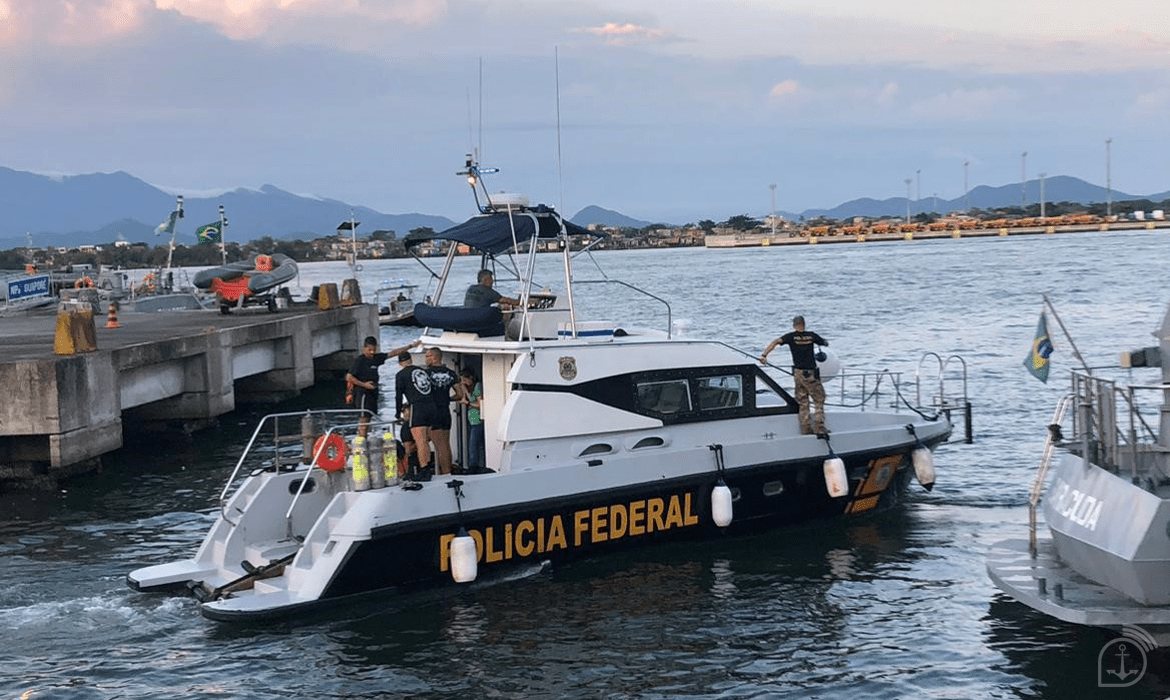This month, the largest drug seizure in the Port of Santos (SP) took place in cooperation with the Federal Police
The Brazilian Navy and the Federal Police made the largest drug seizure ever made in the Port of Santos (SP): approximately 780 kilos of cocaine. The operation took place this month, on April 13. The ship, which was en route to Europe, was inspected by military and federal police officers, who found cocaine tablets packed in bales and that were packed in a compartment in the ship’s hull.
This type of joint action is known as Interagency Operation, which consists in the action of the Armed Forces together with other agencies, to reconcile interests and coordinate efforts, in order to avoid duplication of activities, dispersion of resources, and divergence of solutions.
The Commander of Maritime Operations and Protection of the Blue Amazon, Rear-Admiral Pedro Augusto Bittencourt Heine Filho, explains that the Brazilian maritime and fluvial operational environment is vast, covering 5.7 million km², which corresponds to the maritime area called the Blue Amazon, in addition to the planned waterway network of 64 thousand km, and serves as a gateway both for the exchange of wealth and for dangers of all kinds.
Besides promoting navigation safety, the Navy also has the role of cooperating with federal agencies, when necessary, for the repression of crimes, regarding the use of the sea, inland waters, and port areas. This may be in the form of logistical, intelligence, and communications support, as well as in the area of instruction.
“In general, all the Interagency Operations are significant, whether because of the numbers obtained in the fight against illegal activities, or because of the synergy developed between the Brazilian Navy and the responsible agencies. The joint actions enhance the capabilities of the actors involved and mitigate possible limitations,” emphasizes the Admiral.
He also adds that these operations are structured to achieve political-strategic objectives of national interest and harmonize diverse cultures and efforts, in response to complex problems, which can be both national and international, and involve governmental and non-governmental agencies. As well as the Federal Police, agencies such as the Internal Revenue Service, the Brazilian Institute for the Environment and Renewable Natural Resources (Ibama), the Chico Mendes Institute for Biodiversity Conservation (ICMBio) and the National Agency for Waterway Transport (ANTAQ) have worked together with the Navy.
Ágata Operations
Among the large-scale Interagency Operations is Operation Ágata, an action coordinated by the Ministry of Defense, which, since 2011, has involved various agents with the aim of preventing and repressing cross-border crimes on Brazil’s border with ten South American countries. The joint work aims to ensure the necessary security that the more than 17,000 kilometers of border require, and the actions range from patrol and inspection of the main rivers and roads that give access to the country to the surveillance of airspace.
In 2023, the Navy has already participated in four Agate Operations, and it is expected to participate in others in the second half of this year. The institution can also act in regional operations, based on support requests, for implementation and surveillance at sea and inland waters, in coordination with other agencies.
Source: Agência Marinha de Notícias
